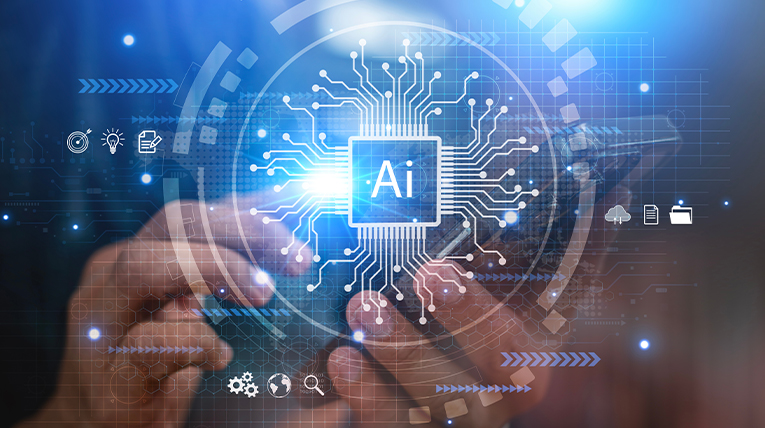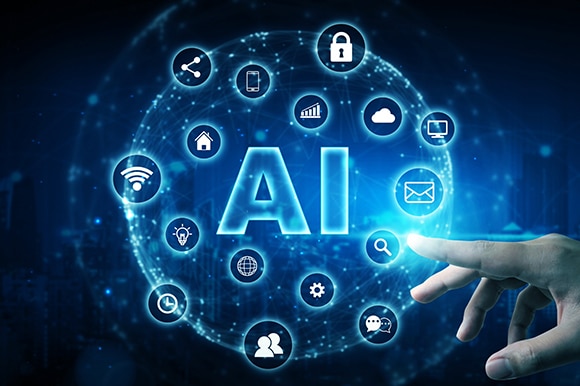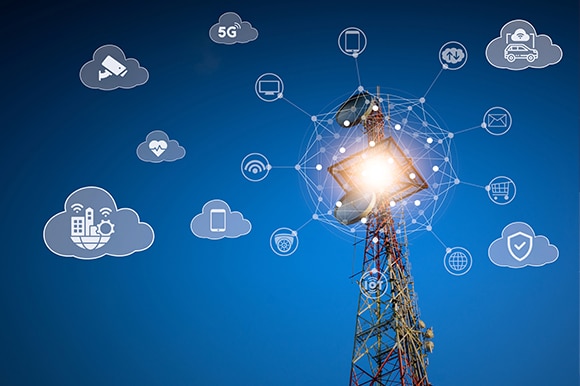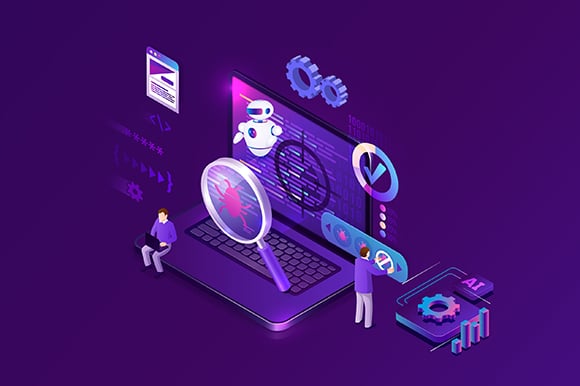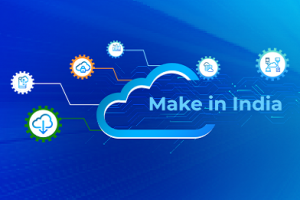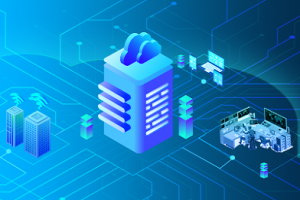In June 2023, BT — one of the UK’s largest telecom providers — suffered an outage caused by a configuration error that disrupted emergency calls. The incident cost the company millions in penalties, but the true impact extended to reputational damage and loss of customer trust. According to a blog by OPT/NET, the outage resulted in 10.5 hours of downtime, £17.5M in penalties, and affected over 14,000 people.
By embedding Generative AI into real-time telemetry systems such misconfigurations can be detected and corrected proactively—often before customers even notice a disruption. This translates to reduced downtime, lower penalties, and enhanced resilience during critical operations.
Table of Contents
The Shift to Autonomous, Intelligent Networks
Today’s digital economy doesn’t just require connected networks — it demands networks that can adapt, self-heal, and secure themselves in real time. Generative AI provides the intelligence layer that makes this possible, transforming how infrastructure is designed, managed, and protected.
For business and technology leaders, this is more than a technology shift — it’s a protect-and-grow strategy. AI-driven automation safeguards uptime, enables rapid scaling to capture growth opportunities, and strengthens compliance posture — all of which directly impact shareholder value, market agility, and even the ability to secure cybersecurity insurance.
Unlocking Quick Wins with Generative AI
1. Automated Network Design & Configuration
- Topology Recommendations – GenAI evaluates real-time traffic, business SLAs, and infrastructure constraints to suggest optimal designs.
- Instant Configurations – Engineers can request setups in plain English, and GenAI generates ready-to-deploy scripts and policies.
2. Intelligent Operations & Self-Optimization
- Predictive Analytics – Forecasts congestion, faults, or anomalies before they occur.
- Automated Troubleshooting – Analyzes logs and telemetry to identify root causes and execute fixes.
- Dynamic Resource Allocation – Adjusts routing and bandwidth in real time to meet performance targets.
Building on these immediate impacts, let’s explore how GenAI is already transforming specific industries — from telecom and enterprise IT to IoT and smart cities.
Industry Use Cases of GenAI
- Telecommunications – Operators achieve up to 70% faster fault resolution and 80% fewer manual troubleshooting steps by integrating GenAI into network operations for 5G and fiber infrastructure.
- Enterprise Networks – Corporations use GenAI for zero-touch provisioning, automated compliance reporting, and real-time threat detection—cutting configuration errors by up to 90%.
- Automotive & IoT – Connected vehicle ecosystems benefit from GenAI-driven edge computing optimization and predictive connectivity management for vehicle-to-infrastructure communication.
- Smart Cities – Municipal networks leverage GenAI for traffic signal optimization, emergency coordination, and unified IoT device management.
These real-world use cases demonstrate the breadth of GenAI’s capabilities. But what’s the actual business payoff? Let’s look at the numbers.
By the Numbers: GenAI’s Impact
As per Network Automation Market Report and Forecast 2025-2034, the AI-powered network automation market is projected to grow from USD 2.9B today to over USD 50B by 2035, with annual growth exceeding 25–30%.
Expected benefits include:
- Reduced Downtime – Predictive maintenance and self-healing minimize outages.
- Lower Operational Costs – Automated processes reduce manual workload.
- Enhanced Security – AI-driven anomaly detection and policy generation strengthen defenses.
- Scalability – Effortlessly supports IoT, 5G, 6G and hybrid cloud adoption.
These compelling business outcomes reflect the powerful capabilities enabled by advanced GenAI technologies.
Emerging GenAI Models
Next-generation networks are getting smarter, faster, and more resilient with the integration of advanced Generative AI models.
- Transformer Architectures – Power intuitive natural language Q&A, detect anomalies instantly, and automate large-scale decision-making.
- Graph Neural Networks (GNNs) – Decode and analyze complex multi-domain network topologies for predictive maintenance.
- Reinforcement Learning – Continuously fine-tunes routing, bandwidth allocation, and load balancing in real time.
- Edge AI – Leveraging platforms such as Google Distributed Cloud Edge, AWS Wavelength, Azure Edge Zones, and NVIDIA EGX to deliver sub-millisecond inference for IoT and automotive V2X communications.
By combining these models, modern networks can self-learn, self-heal, and scale effortlessly—delivering unmatched performance in an ever-changing digital landscape.
Governance, Compliance & Ethical AI
AI in networking must be transparent, secure, and accountable. Best practices include:
- Adhering to privacy regulations like GDPR.
- Ensuring models are explainable (XAI) so network operators understand AI decisions.
- Mitigating bias through diverse and representative training data.
- Establishing governance frameworks for ongoing oversight.
While strong governance and ethical frameworks establish the foundation for responsible AI in networking, organizations must still overcome practical, day‑to‑day realities before these principles can translate into fully operational success. Let’s examine the most common adoption hurdles that can slow or limit GenAI’s impact.
Operational Challenges in Implementing GenAI
Even with robust governance frameworks in place, organizations often face persistent hurdles before GenAI can be fully embedded into networking workflows.
- Data Quality & Privacy – AI outcomes are only as good as the data they learn from, making secure, clean, and representative datasets essential.
- Model Explainability – Without transparent reasoning, AI decisions risk being perceived as “black boxes,” limiting trust and adoption.
- Skill Gaps – Teams must learn new technical tools and operational practices to adapt to AI-powered workflows.
Addressing these challenges early ensures governance policies translate into real-world, sustainable AI adoption.
Why VVDN Leads the Pack
At VVDN Technologies, we fuse deep networking expertise with native AI capabilities to help global operators transition from reactive firefighting to proactive, predictive, and ultimately autonomous network operations.
We combine end-to-end hardware and software mastery with bespoke Generative AI models for log analytics, self-healing, anomaly detection, and predictive maintenance.
Our distinctive edge includes:
- AI-driven automation: Intelligent monitoring and self-optimization across networks, devices, and cloud systems.
- Domain tailored integration : Custom AI models built for industries like networking, telecom, manufacturing, automotive, and healthcare.
- Secure and Compliant by Design : Governance frameworks aligned with global regulations (GDPR, HIPAA, ISO) to ensure trust.
- End to End Expertise : From custom hardware and firmware to cloud-native platforms, VVDN delivers seamless edge-to-cloud integration.
- Accelerated Adoption – Consulting, training, and rapid pilot-to-scale deployments that minimize risk and shorten time-to-value.
- Innovation at the Edge – Advanced edge AI deployments enabling real-time inference for IoT, 5G etc.
We partner with network equipment manufacturers, telecom leaders, enterprises, and IoT innovators to build intelligent networks that continuously adapt, optimize, and safeguard themselves. By blending deep networking expertise with advanced GenAI, we deliver systems that anticipate challenges and drive peak performance.
Ready to transform your network?
Let’s design a Generative AI roadmap tailored to your vision — ensuring your network is not just connected, but continuously intelligent.




















